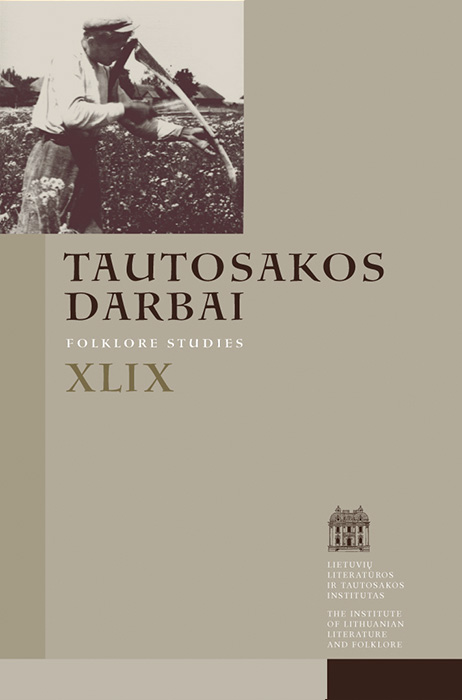Lietuvių pasakų tyrimų šimtmetis: nuo tradicinės komparatyvistikos iki šiuolaikinių metodų
Santrauka
Apžvalginiame straipsnyje aptariama lietuvių pasakų tyrimų istorija. Pasitelkus istorinį aprašomąjį metodą, istoriniu požiūriu analizuojamas tyrimo objekto atsiradimas, raida ir jos dėsningumai. Skaitytojas supažindinamas su pasakų tyrimais Europoje, paskui chronologine tvarka apžvelgiami lietuvių pasakų tyrimai: jų ištakos, tyrinėjimai tarpukario Lietuvoje, jų tąsa išeivijoje, sovietmečio ir nepriklausomoje Lietuvoje. Pastebėta, kad tyrimų pobūdis, kryptis priklauso nuo visuomeninių sąlygų ir istorinių aplinkybių. Lietuvoje vyrauja komparatyvistika bei filologinis požiūris į pasakas, nemaža mitologinio pobūdžio įžvalgų. Yra perspektyvu aktualinti pasakų tyrimų problematiką: tirti pasakų vietą ir reikšmę šiuolaikinėje visuomenėje, jų leidybos istoriją, adaptavimo nūdienos žmogaus poreikiams problemas.
Atsisiuntimai
Skaitomiausi šio autoriaus(ų) straipsniai
- Jūratė Šlekonytė, Pasakų sekėja XX–XXI a. sandūroje: subartoniškės Antaninos Čaplikienės atvejis , Tautosakos darbai: T 64 (2022)
- Jūratė Šlekonytė, Lietuvių stebuklinė pasaka „Sutartis nesiprausti“ (ATU 361): europinis kontekstas ir lokalieji ypatumai , Tautosakos darbai: T 66 (2023): Tautosakos darbai
- Jūratė Šlekonytė, Pasakų sekėjos moterys ir jų repertuaro ypatumai , Tautosakos darbai: T 67 (2024): Tautosakos darbai
- Jūratė Šlekonytė, Augustas Schleicheris – pirmasis lietuviškų pasakų skelbėjas , Tautosakos darbai: T 61 (2021)
- Jūratė Šlekonytė, Nauja knyga apie stebuklinių pasakų simbolizmą , Tautosakos darbai: T 67 (2024): Tautosakos darbai
- Jūratė Šlekonytė, Lietuvių liaudies pasakos „Antimi pavirtusi sesuo“ populiarumo fenomenas , Tautosakos darbai: T 57 (2019)
- Jūratė Šlekonytė, Pirmieji fundamentinio čekų pasakų leidinio tomai , Tautosakos darbai: T 64 (2022)
- Vita Džekčioriūtė, Aušra Žičkienė, Jūratė Šlekonytė, Gražina Kadžytė, Jurgita Ūsaitytė, Lina Būgienė, Daiva Vyčinienė, Kronika , Tautosakos darbai: T 48 (2014)
- Jūratė Šlekonytė, Lietuvininkų sakmės apie laukinę medžioklę: vaizdinio kilmės klausimu , Tautosakos darbai: T 47 (2014)
- Jūratė Šlekonytė, Ar mums reikia pasakų? Atsakymą duoda Bruno Bettelheimas , Tautosakos darbai: T 55 (2018)
